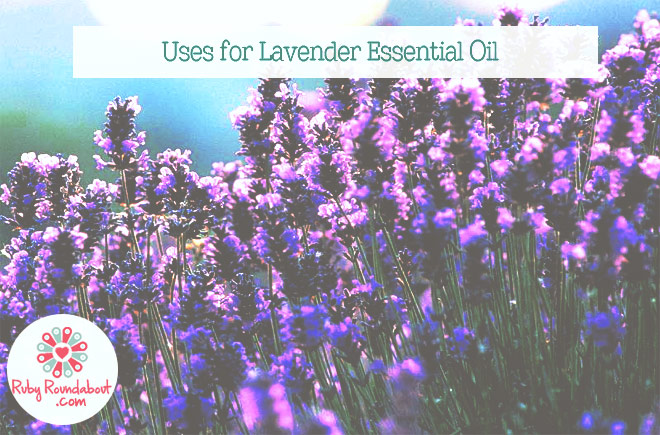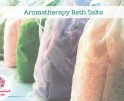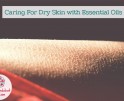
Uses for Lavender Essential Oil
When it comes to Aromatherapy, lavender is perhaps one of the most well known, and most popular, essential oils. In fact we can thank this wonderful oil for the relatively recent ‘re-discovery’ of the healing properties of plants. Although the extraction and use of plant oils for healing, beauty and spiritual purposes dates back thousands of years, it wasn’t until the early part of the 20th Century that Aromatherapy, as we know it, was developed.

Lovers of these fragrant oils can tip their hat to the French chemist Rene Gattefosse, who in 1910 was intrigued by the chemical properties of essential oils. An accident in the laboratory resulted in 3rd degree thermal burns on his hand and forearm. Thinking quickly he immediately covered his hand and arm in lavender essential oil. The burning of his skin and the accompanying pain stopped, and the healing process began almost right away. Amazingly after such a severe burn there was virtually no scarring afterwards. Encouraged by this Gattefosse, and his colleague Dr. Jean Valnet, continued with their research and eventually coined the term ‘Aromatherapy’.
Lavender really is the mother of all essential oils. Not only does it have an impressive range of benefits it also helps to enhance the healing actions of other oils, so is perfect to include in all sorts of blends. It is one of two oils that is safe to use undiluted on the skin, however caution should still be observed in the case of sensitive skin, and in no circumstances should it ever be used undiluted on babies and children. Incredibly versatile and powerful, lavender is a ‘must-have’ essential oil for anyone concerned about the health and well being of their mind, body and spirit.
On an emotional level, lavender is extremely calming, soothing and relaxing. It is ideal for helping to balance the emotions during times of stress and can assist in keeping anxieties and worries under control. Its sedative action makes it the number one choice for anyone suffering from insomnia, especially where mental chatter keeps the mind active and awake. Place 2-3 drops on a tissue and tuck under your pillow. As you inhale the aroma you will naturally drift off to sleep and should continue to sleep soundly for the duration of the night. If you do happen to wake up at 3am, simply grab the tissue and take a few deep breaths. You’ll be nodding off again before you know it!
Generally lavender is seen as a ‘chill out’ oil, but it has amazing restorative properties as well. This means it helps soothe and revive frazzled nerves while also helping to lift depression and energise the body on a subtle level. Whenever you feel the need for additional support look to lavender for a helping hand. Combine 6-drops lavender and 3-drops orange in 2 Tablespoons of sweet almond oil and add to a bath for a truly comforting and revitalizing experience. Lavender can also be of great assistance in cases of panic attacks, shock, palpitations and high blood pressure. Once again just adding a few drops to a tissue and inhaling the scent can be of huge help. A simple ‘rescue’ massage blend of 6-drops lavender, 3-drops mandarin, 3-drops frankincense and 3-drops benzoin can be made up and kept on hand to massage into the upper chest, back and forehead in times of upset.
Aching muscles don’t stand a chance against the analgesic properties of lavender, especially when combined with other pain reducing oils such as marjoram, chamomile and rosemary. A bath with 3-drops lavender, 2-drops marjoram and 1-drop chamomile will help relieve the pain of stiff, tender muscles. If chronic tension headaches are getting you down try rubbing 1-drop of neat lavender into each temple. Don’t press too hard, as a gentle touch is all that’s needed. Alternatively laying down with a lavender compress across your forehead can also work wonders and reduce reliance on over the counter headache remedies. Anyone suffering from arthritis, rheumatism and sciatica can also benefit from the anti-inflammatory properties of lavender. Use 6-drops lavender, 6-drops chamomile, 3-drops myrrh and 3-drops marjoram in 60ml sweet almond oil as a massage or bath blend 2-3 times a week to help alleviate pain and inflammation.
One of the greatest benefits of lavender essential oil is its ability to fight bacterial, fungal and viral infections. Boosting the immune system, lavender is a preventative-healthcare super weapon in the war against germs. Used in a steam inhalation at the first sign of a sore throat, lavender can stop colds, catarrh and sinusitis from developing. Its anti-spasmodic properties make it helpful in cases of bronchitis and chesty coughs. When cold and flu season kick in, use lavender to fragrance and protect your home and office space.

Used in a massage or a footbath, it can help deodorise the feet, and prevent the potential development of verruca, warts and athletes foot. If tummy upsets, flatulence and nausea are causing complaint try rubbing a blend of 3-drops lavender and 2-drops peppermint oil mixed with 20ml of a base oil into your lower abdomen. Lavender can also be helpful to women suffering from menstrual troubles, including easing cramps and encouraging menstruation in the case of scanty or irregular periods. Use 6-drops lavender mixed with 1 Tablespoon of base oil in a hot bath for best results. The beautiful aroma of the oil will also help to balance the nervous system and keep hormones on an even keel.
As Rene Gattefosse discovered, lavender has amazing healing abilities. It helps to stimulate healthy new skin growth so can reduce scarring in the cases of acne, eczema, psoriasis and burns. It is also one of the most effective treatments for spots and pimples. Dabbing 1-drop of neat lavender onto a spot can help it clear in almost no time at all. The anti-inflammatory properties mean that flare-ups of skin conditions are minimalised and the calming effect of the oils helps to work on any emotional triggers behind such flare-ups. Insect bites and stings are immediately soothed by the application of neat lavender to the affected area, and it can even help prevent the itchiness that usually results afterwards. If you burn yourself while cooking, grab the lavender and apply it directly to the burn. The analgesic properties will take the pain away, and the healing properties mean no blister, limited redness and much faster healing. With so many benefits that cover such a wide array of physical and emotional ailments it is obvious lavender is one essential oil every household should have!
Recommended
-
Essential Oils for BeautyJune 26th, 2015
-
Essential Oil Remedies For Ear InfectionsJune 1st, 2015
-
Aromatherapy Bath SaltsDecember 3rd, 2014
-
Can Aromatherapy Be Used During Pregnancy?November 26th, 2014
-
Caring For Dry Skin with Essential OilsNovember 19th, 2014






